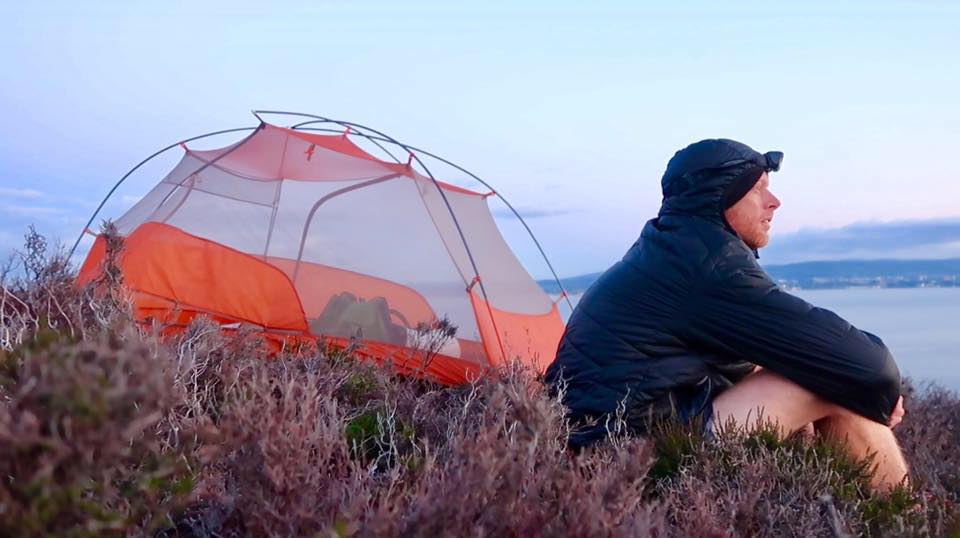I had some extremely cold nights on the Pacific Crest Trail a few years ago during which myself and three hikers found it difficult to sleep. We had decent equipment at the time but not enough to feel comfortable in the snow-capped peaks of Washington.
But how might this cold and sleepless night have been avoided?
If I had a warm sleeping bag liner, there would have been no issue and I ended up relying on wearing several layers of clothing in my sleeping bag. And while this kept me safe, it just wasn’t quite warm enough and certainly not comfortable.
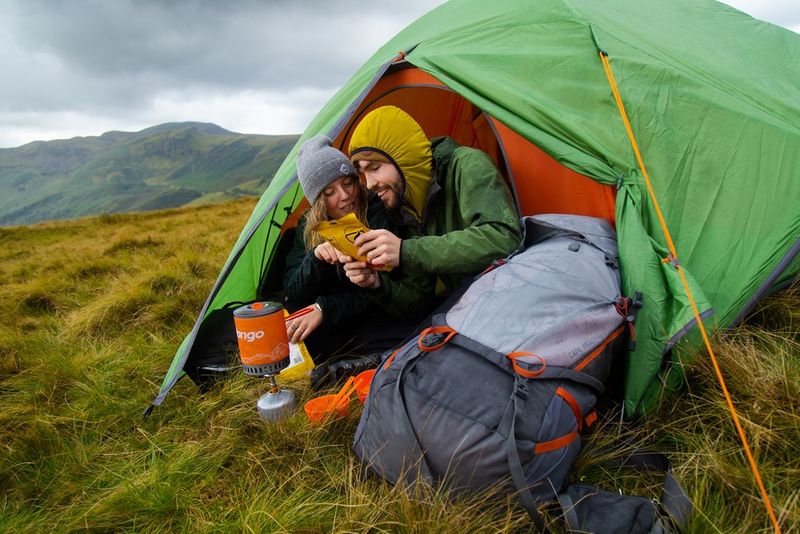
Wild Camping in Winter: From Stressed Out to Searching for Solitude
I go wild camping to have a good time and add a little excitement to my week. But I also want a stress-free time and a good night of sleep is also near the top of my list.
With this in mind, there were times early on when I really didn’t enjoy wild camping and felt stressed, worried or uncomfortable. Here’s a few reasons why:
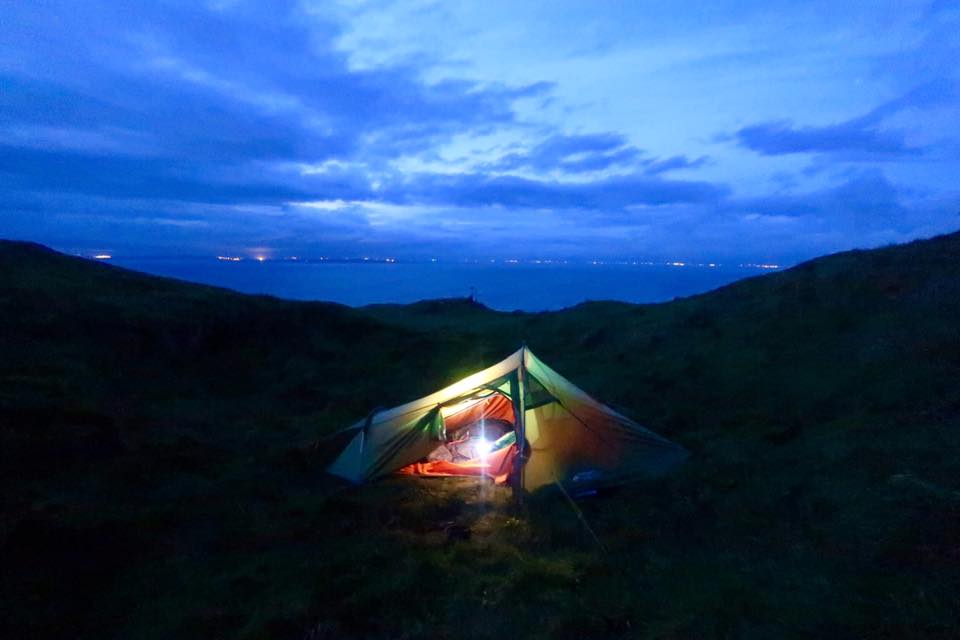
– Taking a tent or sleeping bag that was unsuitable for wild camping in winter.
– Wearing insufficient rain gear.
– Having no weather-proof system to keep my gear safe and dry.
– Leaving my stove behind and missing out on the pleasure of a hot meal!
I will talk about some of these in a moment but for now, I wanted to make it clear that having the right gear and preparation is most important for wild camping in winter. In fact, once I figured this part out, I fell in love with wild camping at a time of year when the trails were so quiet and when the frost made me fully appreciate my morning coffee or the warmth of my sleeping bag as I sat up in the tent doorway.
You see, I should also add that I absolutely love wild camping in Winter!
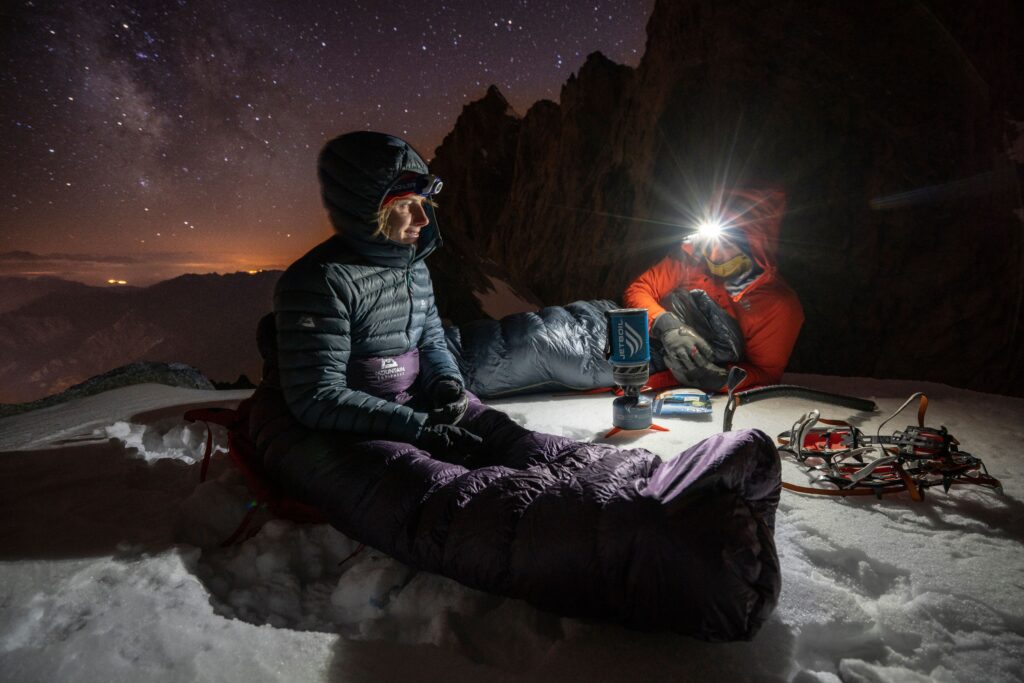
Some Things to Keep in Mind for Wild Camping in Winter
Pick Somewhere that’s Easy to Reach and Return
I went wild camping in Wicklow some years ago and decided to trek up over Tonelagee and down to Glenmacnass River. It felt like a nice workout upon reaching the river but after a night of heavy rain, the way back took twice as long. In fact, it took so long that I was miserably wet and cold and near ended up hiking in the dark.
Moral of the story? Remember daylight is short through Winter and the unpredictable weather can turn what seems like an easy trek into a proper slog.
I suggest you pick a local marked trail with which you are familiar and then plan to wild camp just off that particular trail. If the trail is maintained (which is should be), you can rest assured that getting home should require the same effort as getting in there.
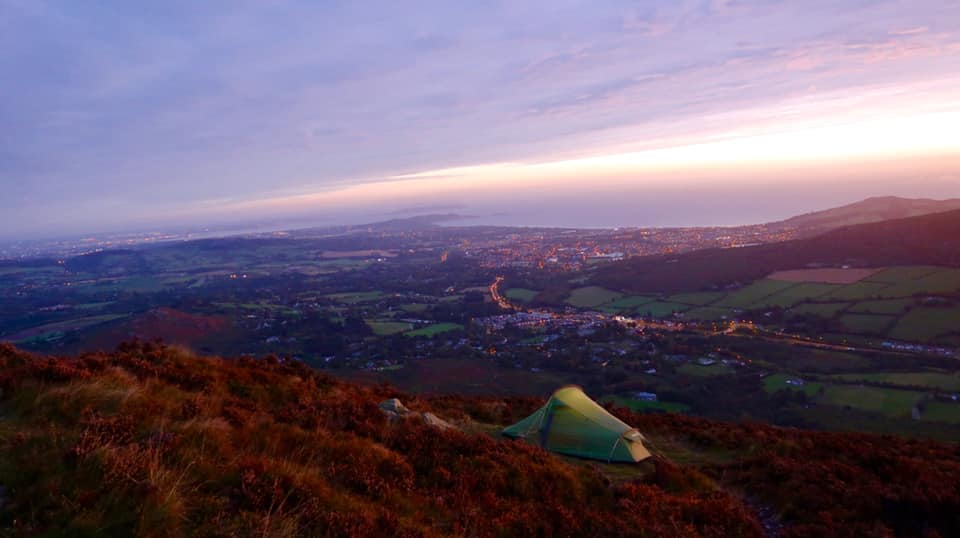
Invest in a Sleeping Bag Liner
It wasn’t just the Pacific Crest Trail when I was left yearning for a sleeping bag liner. This has also happened on my wild camping trips through Africa and even here in Ireland. It’s true that my choice of sleeping bag wasn’t always right but most times in which I was cold, the weather had taken me by surprise. A sleeping bag liner is not only a lightweight item to carry but also surprisingly effective and just as useful for trips during the warmer months or when sleeping in hostels on the Camino de Santiago.
Use Separate Dry Bags for Your Spare Clothes and Belongings
If you plan to hike in especially wet weather, it’s not enough to expect a waterproof cover to protect your backpack. You will need one, of course, but a backpack cover is only useful for reducing the exposure of your bag’s contents to the elements. In reality, rainwater will always find a way into your backpack during a heavy downpour and this will certainly happen any time you need to open up the bag. You can protect these contents by using a separate dry bag for clothing, electronics etc.
Make Sure You Take Warm Gear and Proper Rain Jacket/Pants
It’s essential to have dry gear at the end of every day in the wild. This includes your jacket, clothing and sleep system. It should go without saying that you can’t keep warm and dry in wet conditions without a proper rain-jacket and I always discourage relying on a poncho of any kind to do the job.
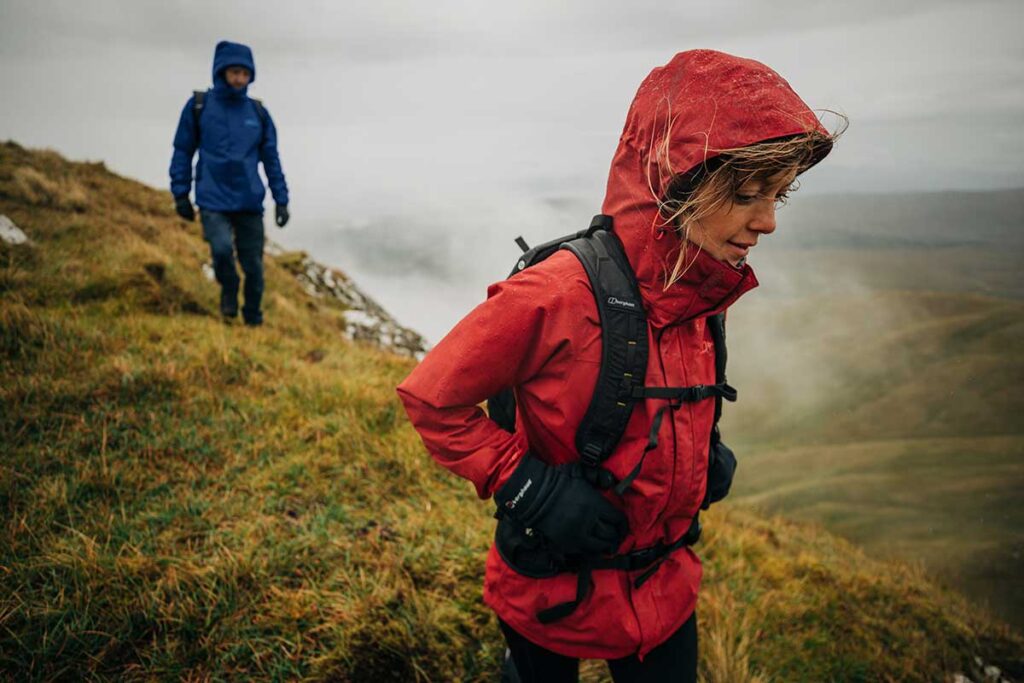
You also can’t sleep in wet socks and I recommend taking long-johns and a having a warm fleece on hand for the evenings. Believe it or not, I will often pack my down-jacket away somewhere dry so that I have an especially warm layer to wear in the evening. Waterproof trousers are another item that some hikers forget and you absolutely need these for wild camping in Ireland or anywhere for that matter.
Either way, safety is the main priority for wild camping in winter and nothing is more important than going to bed in a safe, dry and warm environment.
Try to Develop a System for Staying Dry
Even if rain is not forecast, you should still have a strategy for keeping your gear dry. The weather is just so unpredictable in Ireland and I can’t count the number of times I got caught in an unexpected downpour. Also, there is always the risk of stumbling head-first into a creek in Donegal which is something I may have done in the past. Afterwards, I had to return to a B&B in town because my sleeping bag was so wet.

Anyway, I recommend having a system in which bags are kept inside other bags and then also protected by a backpack cover. Never leave your backpack open or sitting in the rain and put snacks in your pocket before leaving shelter so you don’t need to open your backpack again. Finally, don’t wait for conditions to deteriorate before putting on your rain jacket or waterproof pants and get ready at the first sign of rain.
Here’s a few more tips for wild camping in winter:
– Keep your backpack inside the tent at night (not in the porch area)
– Keep your shoes inside the tent (not in the porch area)
– Keep your tent inside the backpack (Not strapped to the outside)
– Put your sleeping bag inside a plastic bag/bin liner at the very least.
– Avoid having your sleeping bag or clothes touching off the sides of the backpack.
Don’t Underestimate the Power of Warm Meals and Drinks
If the wind, rain or cold feels like too much, I might not be in the mood for taking out the stove. However, I always do because nothing compares to a warm drink or meal in these conditions. If you worry about keeping the stove lit at such times, think about buying the MSR Windburner but either way – please do take the stove with you!
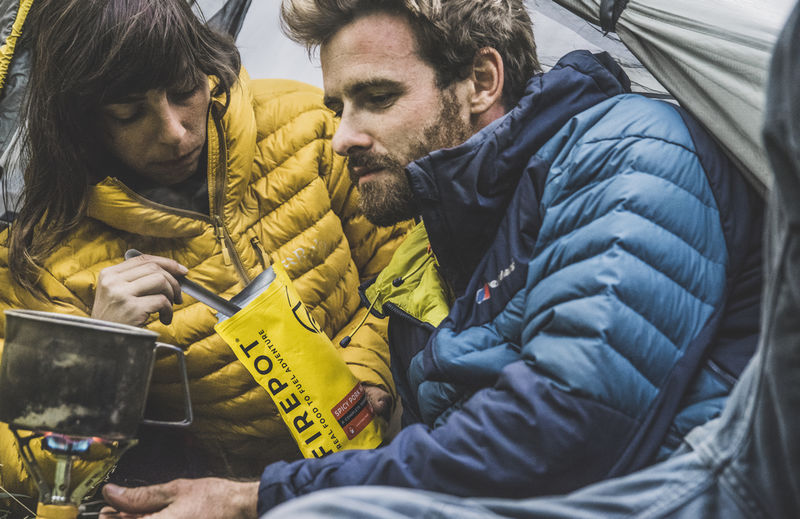
I also say this because I firmly believe that cooking, eating and drinking are central to the enjoyment that comes with wild camping. I don’t particularly enjoy cooking but will humour myself for the sake of the pleasure that comes from a warm meal/drink.
And Some of these Last Minute Tips for Wild Camping in Winter
– Buy a reliable headlamp so you can put your hands in your pockets.
– Wear a beanie hat to sleep so you don’t wake up with a cold head!
– Take a flask of hot water if you don’t want to use a stove.
– Cooking in cold weather isn’t the most pleasant – Buy ready-made meals.
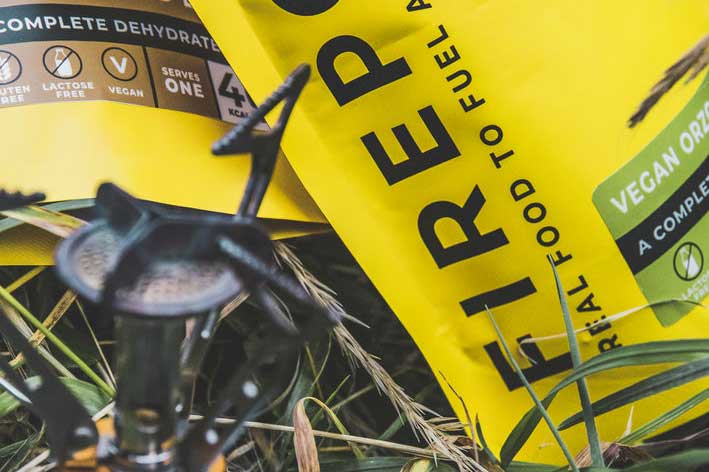
– Get up and moving early to keep warm and have cereal bars for breakfast.
– Put your phone in a ziploc bag in your pocket.
– Put your pride away and wear long-johns the entire time!
– Bring a book for entertainment and leave streaming for when you’re back home.
Final Thoughts
Wild camping in winter is all about preparation. While I don’t think it’s wise to feel overly stressed, I do think it’s important to be especially careful at this time of year. If I was to re-iterate one thing in this piece it would be to stay as local as possible – especially if you don’t have much wild camping experience. This might mean camping on a nearby hill instead of the mountains and sticking to well-marked trails at the very least. Otherwise, if you pay close attention to what you pack and make every effort to stay dry and warm at all times, wild camping in Winter should be a safe, comfortable and enjoyable experience.

